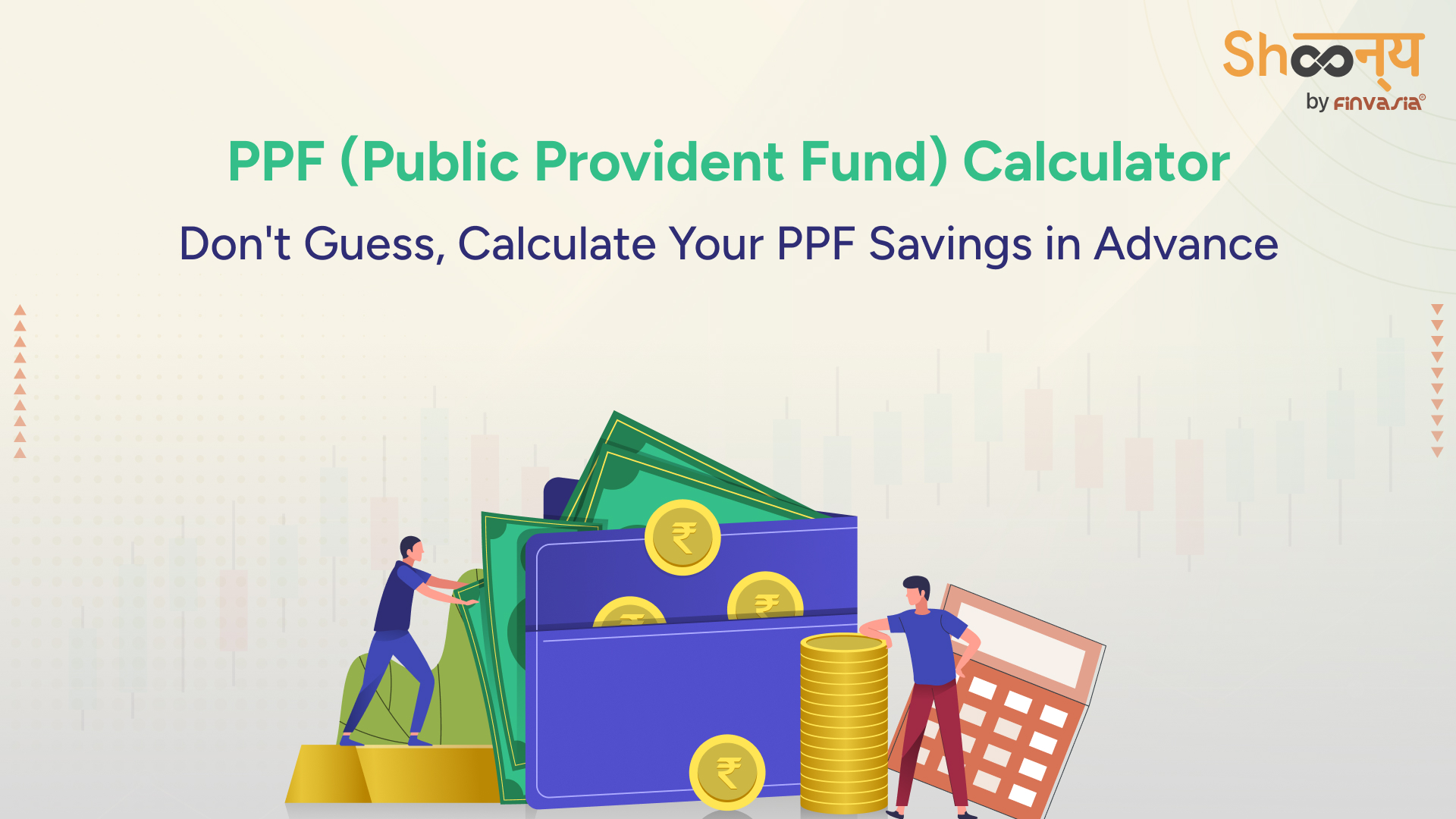PPF Calculator for Long-Term Tax-Saving Investment: Public Provident Fund (PPF) 2024

In today’s time, savings and financial planning often revolve around tax-efficient investments. The PPF (Public Provident Fund) is a popular choice for its tax benefits and long-term savings potential. Your CA or a wise colleague at work may have recommended opening a PPF account to save on taxes and build long-term savings. To help you decide how much to invest in the Public Provident Fund, you can use a PPF calculator.
Now, let’s look at the benefits of Public Provident Fund and how to use the PPF calculator.
Let’s get started!
What is Public Provident Fund (PPF)?
The PPF is a long-term (15-year) savings scheme where you can deposit money regularly to build a fund for your future needs. It’s considered a safe investment because it’s backed by the government.
You can start your PPF account with as little as INR 500 and can deposit up to INR 1,50,000 in a financial year.
Not only this, but you also have the flexibility to make deposits lump-sum or in instalments.
What are the Benefits of Public Provident Fund (PPF)
The Public Provident Fund (PPF) is often favoured among salaried employees due to the following advantages it offers:
- Tax Savings: Investments in PPF qualify for tax deductions under Section 80C of the Income Tax Act.
- Attractive Interest Rates: As of January 1, 2024, PPF offers an interest rate of 7.1% per annum, compounded yearly. This helps your savings grow over time.
- Long-Term Investment: It encourages disciplined savings with a minimum investment period of 15 years. You can extend this period in blocks of 5 years.
- Liquidity Facilities: After a certain period, you can take loans against your PPF balance or make partial withdrawals.
- Security: Since it’s backed by the government, PPF is considered a safe investment option.
These features make PPF a popular choice for those looking to save for the long term while enjoying tax benefits and security.
Now comes the decision: how much should I invest in PPF?
To determine the ideal amount, you can use a PPF calculator. This tool helps you estimate your potential returns based on your contributions and the PPF interest rates in 2024.
What is the Formula for PPF?
The correct formula used by PPF calculators to compute the maturity amount is generally represented as:
M = P [ ( { (1 + i) ^ n } – 1 ) / i ]
Where:
- M is the maturity amount of the PPF.
- P is the annual installment (the amount you invest every year).
- i is the interest rate (divided by 100 to convert the percentage into a decimal).
- n is the number of years.
Now, why do you actually need a PPF calculator?
The PPF calculator simplifies this process by automatically computing the public providend fund- PPF maturity amount.
PPF Calculator
A PPF (Public Provident Fund) calculator is a useful tool that helps you estimate the growth of your investment in a PPF account over time.
How to Use the PPF Calculator
Using a PPF calculator is simple and user-friendly.
You can follow these steps to calculate your PPF maturity amount:
Let’s say you wish to invest ₹150,000 in a year.
You can choose to invest this amount monthly in smaller amounts, quarterly, or all at once. You just need to fill in the amount, the time period, and the current PPF interest rate (7.1% per annum).
The total investment would be:
Total investment: ₹22,50,000
Total interest you earn in public provident fund: ₹18,18,209
Thus, your PPF maturity value will be ₹40,68,209
Benefits of PPF Calculator
A PPF calculator can be a great help in several ways:
- Simplifies Complex Calculations: It quickly computes the maturity amount and interest without you having to deal with the complex formula of PPF.
- Saves Time: Instead of manually calculating the returns each year, the calculator does it instantly.
- Financial Planning: It helps you plan your long-term savings by showing you how much you can expect to earn from your PPF investment.
- Goal Setting: By knowing the future value of your PPF, you can set and adjust your financial goals accordingly.
- Tax Planning: Since PPF investments have tax benefits, the calculator can help you understand how much tax you can save.
In essence, a PPF calculator is a convenient tool that aids in making right decisions about your savings and investments in a Public Provident Fund.
You may also want to know the What is SWP Calculator
FAQs| PPF- Public Provident Fund
The amount you’ll receive after 15 years in PPF depends on your annual contributions and the prevailing interest rate. For example, if you start now with a current interest rate of 7.1%, after fifteen years, i.e., in 2039, you will receive approximately ₹40,68,209.
Investing 1 lakh per year in PPF can grow significantly due to compound interest, with exact figures depending on the current interest rate.
PPF may offer better tax benefits and generally has a higher interest rate compared to FDs, but FDs provide more liquidity. The choice totally depends upon your personal choices in terms of financial goals.
If you invest ₹10,000 per month in a Public Provident Fund (PPF), this would mean ₹120,000 per year. This way, you can save a substantial amount over time with tax-free interest. After 15 years, the total investment and interest earned can provide a significant return.
No, an individual is only allowed to open one PPF account under their name.
You can open a PPF account at a post office or a bank
The amount you invest qualifies for a tax deduction of up to Rs 1.5 lakh under Section 80C of the Income-tax Act, 1961. The interest you earn from a PPF account is also tax-free.
______________________________________________________________________________________
Disclaimer: Investments in the securities market are subject to market risks; read all the related documents carefully before investing.








